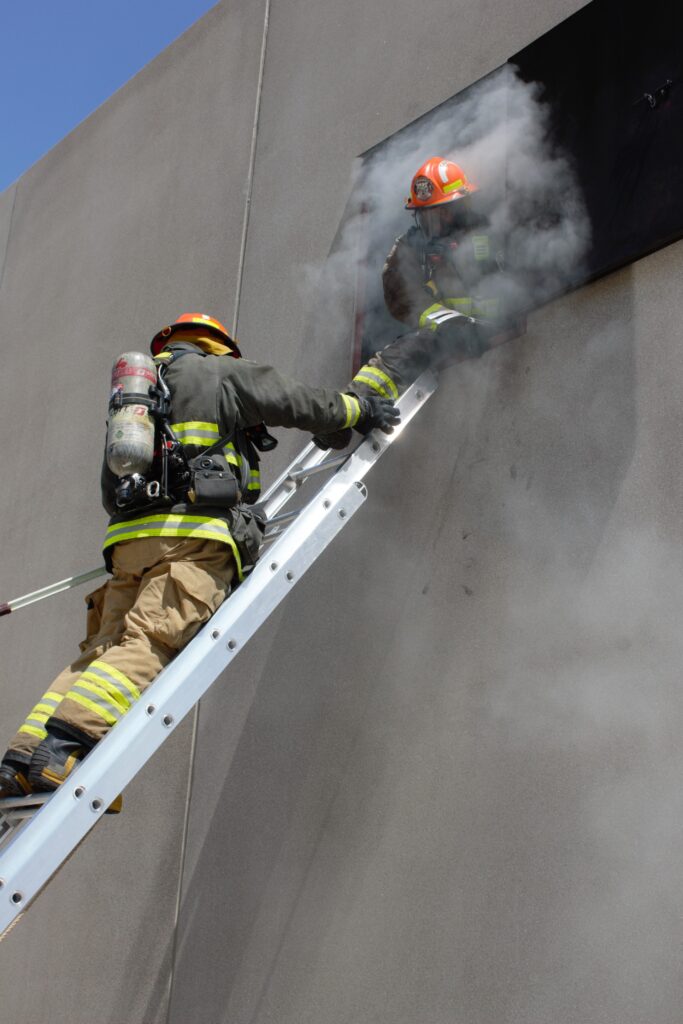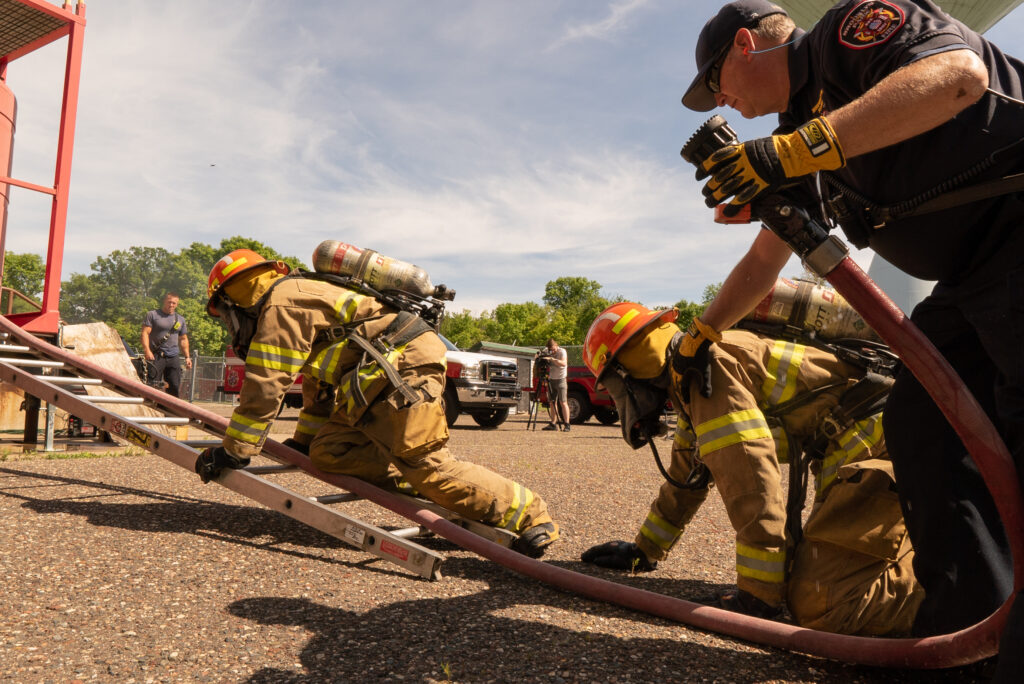I recently had the opportunity to attend several days of hands-on training with our firefighter cadets and street crews at the East Metro Public Safety Training Center in Maplewood, Minnesota. For our cadets, the training came towards to end of their 5+ month full-time academy program; they spent five days stretching lines, climbing ladders, performing searches, and other common fireground tasks. The cadets joined our street crews where they practiced new hose line deployments and Vent-Enter-Isolate-Search (VEIS) tactics.

While it was most certainly an intense and strenuous week, it was incredibly educational. The instructors did a great job at creating a real-world training environment. As a chief, it is not every day that I get the chance to get into my gear and SCBA. It was great working alongside of our crews; the training tested my physical abilities and was a true testament for the endurance required of our profession.
The week also reminded me of how important it is for our training to be realistic. It also needs to be focused on the most essential and critical tasks that firefighters will be expected to perform on the job. When time is of the essence, firefighters are expected to perform with speed and precision; their reactions need to be second nature. Training builds the skills, confidence, and muscle memory required to perform under the most stressful of conditions.
In one of our training evolutions, the scenario included a simulated house fire on the second floor with a victim. Two firefighters were assigned for suppression and two were assigned to search using VEIS. Executed in real-time, the suppression crew stretched a charged line through a smoke-filled structure while the search crew deployed a ladder to the second floor. Using VEIS, one firefighter entered the bedroom, brought the 170+ pound, water-soaked manikin through the window, and passed the “victim” to the second firefighter on the ladder. All these tasks were completed in a matter of minutes.
While there is certainly a first for everything, I have yet to be called to a SCBA dodgeball fight or a giant Jenga block extrication. These are certainly fun, team building events, but should not be prioritized over real-world, scenario-based training.
Training needs to be much more than simply checking a box to earn required training hours. While the foundational training of Firefighter I and II is important, we must truly prepare our firefighters for the real-world conditions they will face. Whether a firefighter has one month of experience or decades, training that mimics real-world conditions – such as removing a victim from a second-floor window, responding to a firefighter mayday, or the basics of a single-person ladder throw – is vitally important.
“While there is certainly a first for everything, I have yet to be called to a SCBA dodgeball fight or a giant Jenga block extrication. These are certainly fun, team building events, but should not be prioritized over real-world, scenario-based training. “
Recognizing the limited staffing models of many departments, training should also emulate your department’s typical response to an incident. By developing training that reflects our true staffing models, we are allowing our firefighters the ability to recognize their own strengths and limitations, especially when staffing is limited. Six firefighters performing a task is much different than two.

As chief officers, we all recognize the incredible demands placed on our firefighters today. Time is incredibly precious; we must continue to develop and maintain our skills with practical, real-world, competency-based training that prepares them for the true demands of the job. We owe it to ourselves, each other, and to the community we took an Oath to serve.
Note: this article appeared in the Spring 2021 issue of the Minnesota State Fire Chiefs Association magazine. For other articles by leading fire service professionals, join the MSFCA today! Magazine memberships are available!